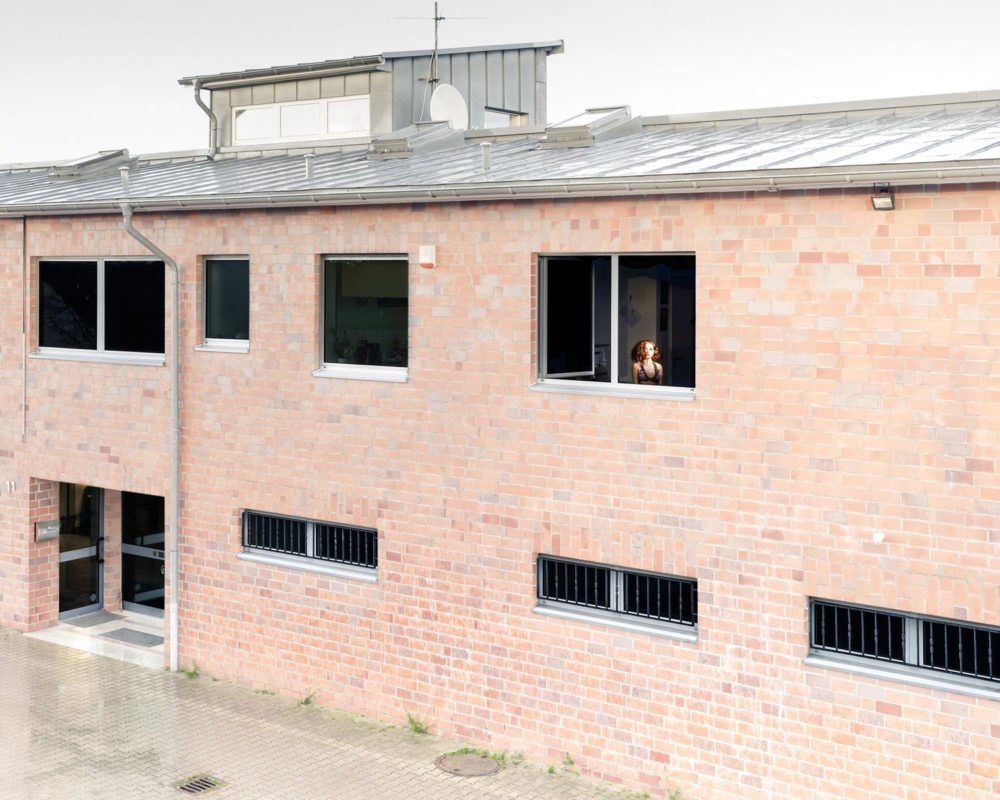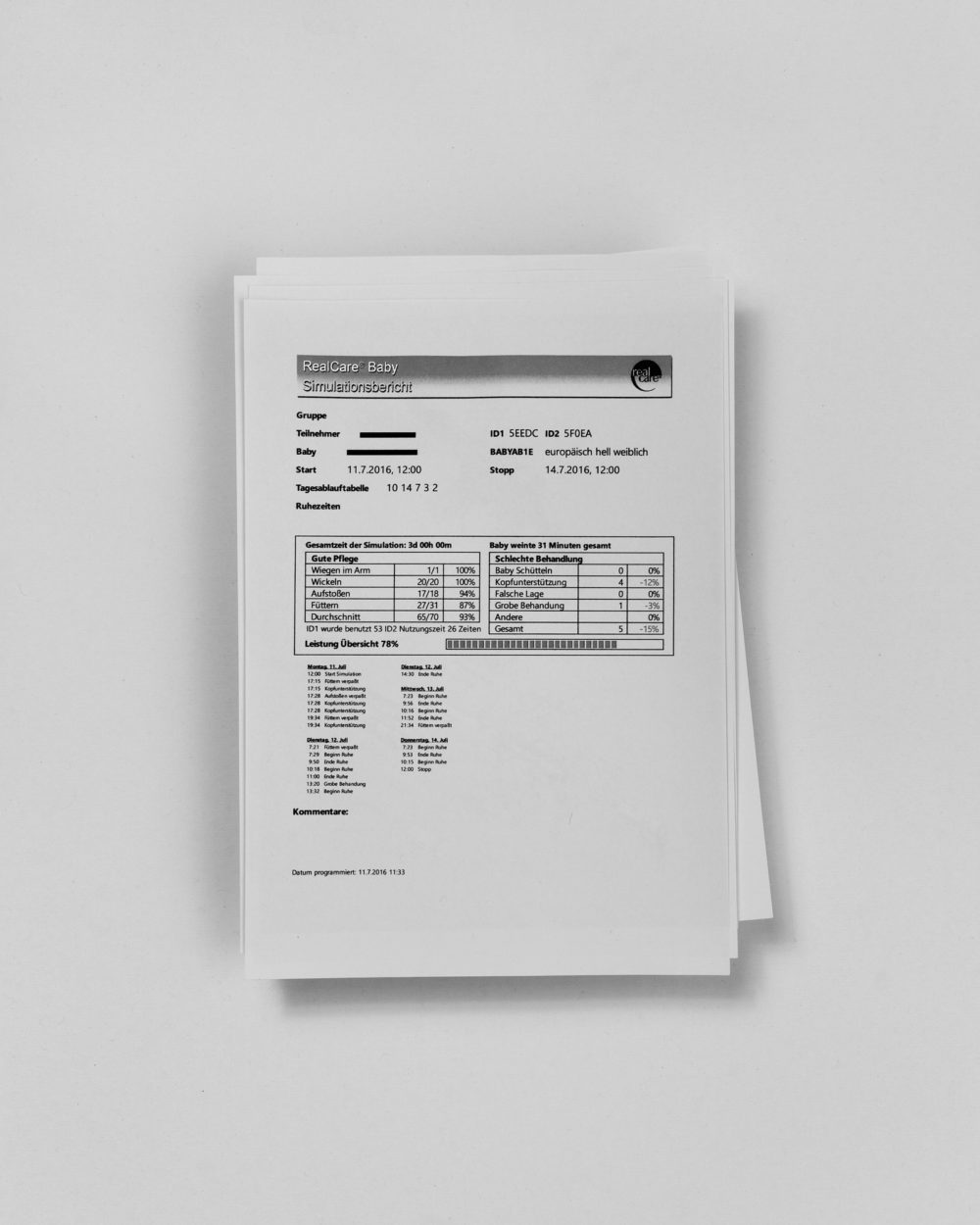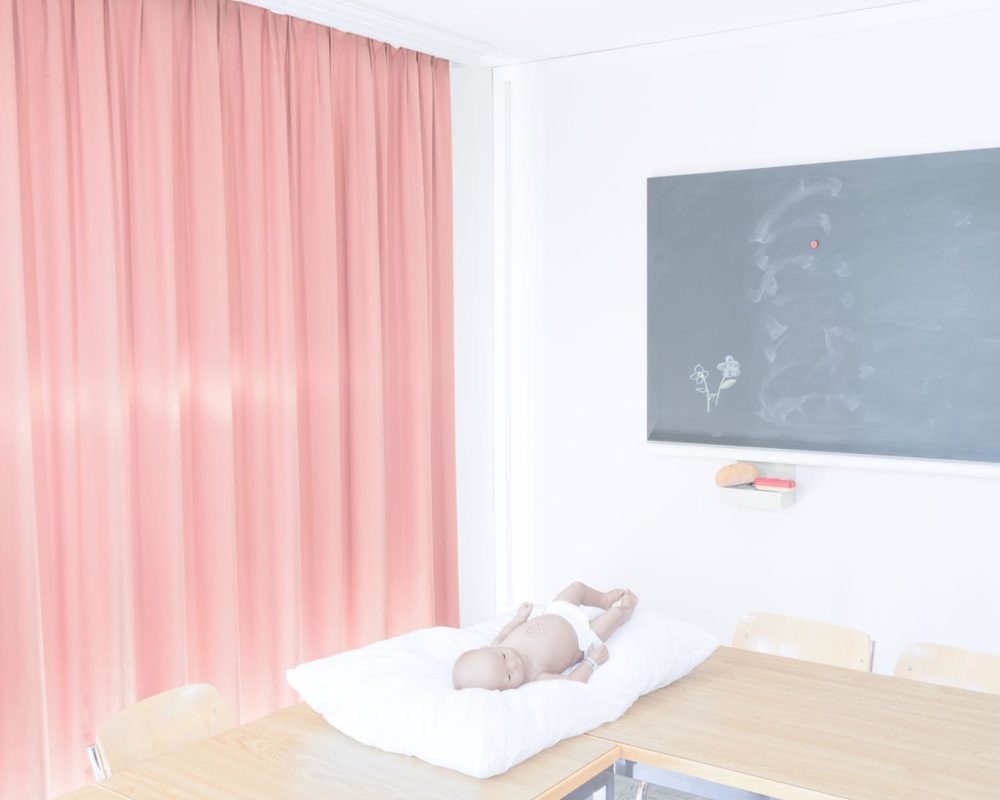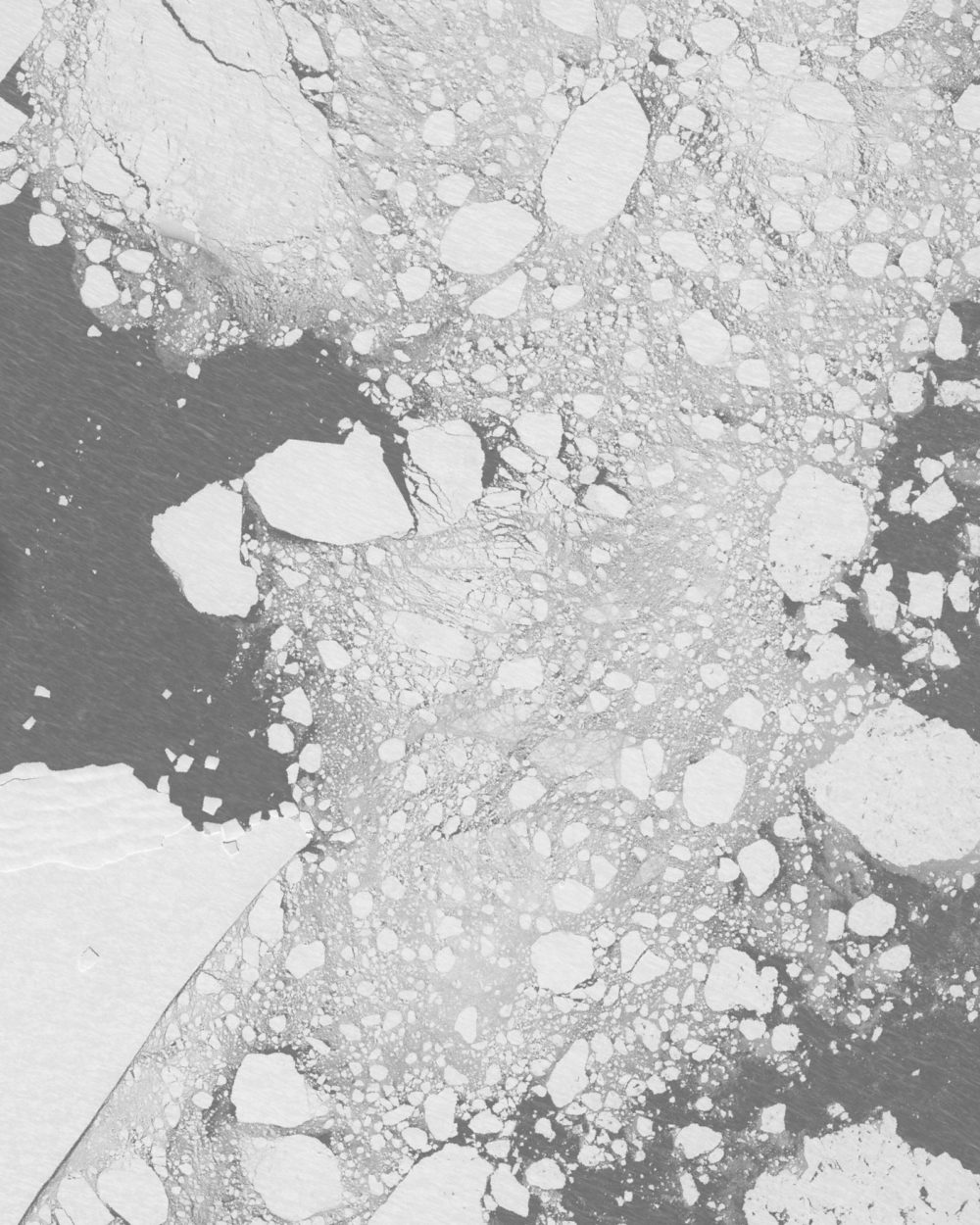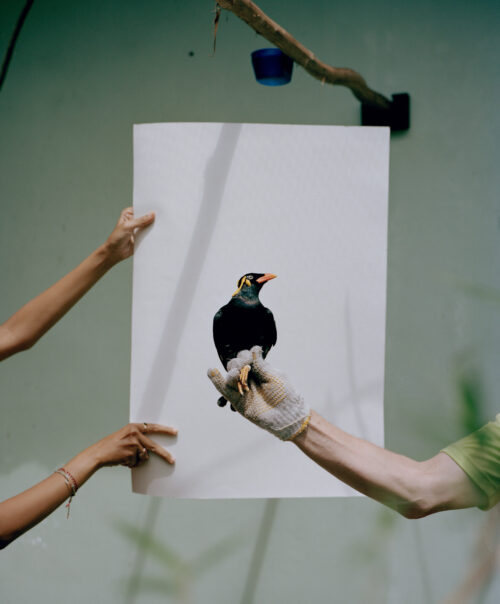Picture Series
Daniel Niedermeier | Jan Staiger Simili Modo
A model for equine intubation at Hanover’s University of Veterinary Medicine, a RealCare baby for teenagers to have an “authentic” parenthood experience at the Swiss University of Fribourg, the Bilster Berg racing and testing track: in illusory worlds and laboratories, reality is put to the test. Avoiding defects is the highest priority. As isolated systems, these worlds mimic natural laws and are interfaces between naturality and modification. The photographic display functions as a further duplicate that again suggests a vague concept of reality to viewers. It serves as a reference to these constantly changing picture worlds and acquired seeing habits. The spectrum of these imitations runs through various realms of society: in the areas of industry, security, medicine and entertainment, the course is being set for changes whose effects will long remain unperceived.
- Artificiality
- Optimisation
- Surface

*1993 in Freiburg im Breisgau, Germany
Daniel Niedermeier and Jan A. Staiger started studying Photojournalism and Documentary Photography at Hanover University of Applied Sciences and Arts at the same time in 2016. Their joint long-term project “simili modo” was distinguished at the German Youth Photo Prize and the Hahnemühle Student Photography Competition.

*1995 in Nuremberg, Germany
Daniel Niedermeier and Jan A. Staiger started studying Photojournalism and Documentary Photography at Hanover University of Applied Sciences and Arts at the same time in 2016. Their joint long-term project “simili modo” was distinguished at the German Youth Photo Prize and the Hahnemühle Student Photography Competition.







